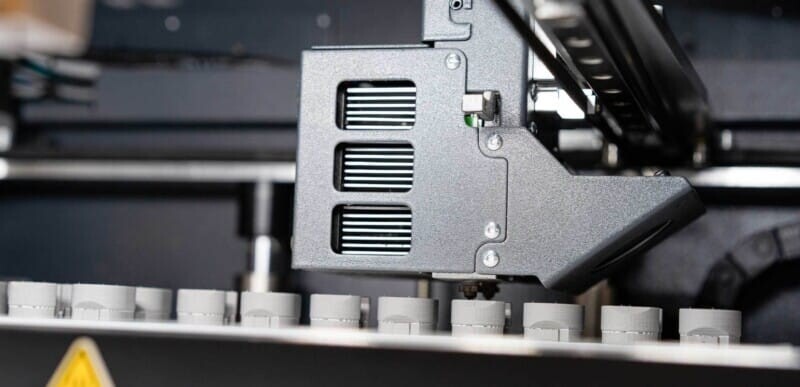What is Additive Manufacturing? Understanding the Technology and its Impact

What is additive manufacturing? The term additive manufacturing (AM) refers to the process of fabricating physical 3D objects by extruding material, layer-by-layer, to form the desired shapes. For manufacturers, AM typically refers to industrial use of 3D printing for activities such as building tooling and fixtures, prototyping and design validation, and production of low-volume end-use parts.
Why is it called additive manufacturing? The etymology of the term “additive manufacturing” comes from the methodical contrast between how 3D printing and traditional “subtractive” manufacturing processes work to shape objects. 3D printers work through the addition of layers of material in different shapes on top of each other. Traditional manufacturing methods produce the final result through the reduction or subtraction of material, such as cutting away sections of an alloy to make a bolt or hinge. Traditional subtractive manufacturing is notoriously slow, expensive, and comes with design limitations, whereas additive manufacturing is paving the way for quick, low-cost, automated processes.
Additive manufacturing and 3D printing Within the industry, additive manufacturing will typically always refer to 3D printing. Technically speaking however, 3D printing is a subset of AM, which includes a few other non-3D printing methods of manufacturing.
While the terms “3D printing” and “additive manufacturing” are frequently used interchangeably, one key distinction should be noted. Additive manufacturing typically carries an industrial connotation, often referring to larger-scale use of 3D printing for manufacturing operations.
How does additive manufacturing work? Additive manufacturing works by converting digital inputs — such as computer-aided design files of industrial parts — into tangible 3D objects.
Additive manufacturing materials
- Plastics. Widely used plastics range from budget-friendly prototyping materials like to rubbery, flexible filaments and high-performance thermoplastics like ULTEM™ 9085 Filament. Plastic materials are typically packaged in filament spools.
- Metals. AM metals typically come in powder form, either as loose powders or bound together with a binder material.
- Composites. Some FDM-printers can create composite materials combining plastics with reinforcing fibers to improve the parts’ strength, durability, stiffness, and heat resistance.
How organizations use AM across industries Today, leading organizations across a wide range of industries incorporate additive manufacturing to address specific manufacturing needs:
- Aerospace. Major aircraft OEMs use additive manufacturing in their operations. AM allows them to streamline their supply chains by printing strong, lightweight end-use parts for aircraft, as well as print tooling quickly and economically.
- Consumer products. Additive manufacturing is used increasingly for end-use production parts on products such as audio equipment and electronic devices.
- Dental. Dentists and orthodontists use additive manufacturing to fabricate dental models, dentures, retainers, aligners, dentures, and more.
- Education. Leading universities are implementing additive manufacturing — in labs, makerspaces, and as part of engineering curricula — to educate the next generation of scientists, engineers, and manufacturers.
- Energy. Leading energy providers 3D print parts that make the manufacture and maintenance of wind turbines faster, easier, and more efficient than ever.
- Federal and Defense. Federal government organizations, such as the U.S. Air Force and Army, use additive manufacturing to accelerate R&D and solve supply chain issues with the ability to print mission-critical end-use parts from remote locations.
- Industrial Equipment. Industrial manufacturers use additive manufacturing to build custom tooling, accelerate go-to-market timelines, and print end-use parts for various types of factory machine systems.
- Medical. To meet production needs through strained supply chains, manufacturers of medical devices and equipment are 3D printing everything from tourniquet clips to COVID-19 personal protective equipment.
- Scientific and Laboratory. Scientific manufacturers 3D print end-use parts for various laboratory automation systems.
Read this full article here to learn:
- What additive manufacturing is
- How it works
- Materials used in AM
- Benefits and potential drawbacks
- Current state of AM technology
- Industries using additive manufacturing
- Types of different additive manufacturing processes
- AM and Industry 4.0
- Government programs involving AM
Click here to learn more, get a quote, or contact an expert at The SolidExperts.

SUBMIT YOUR COMMENT